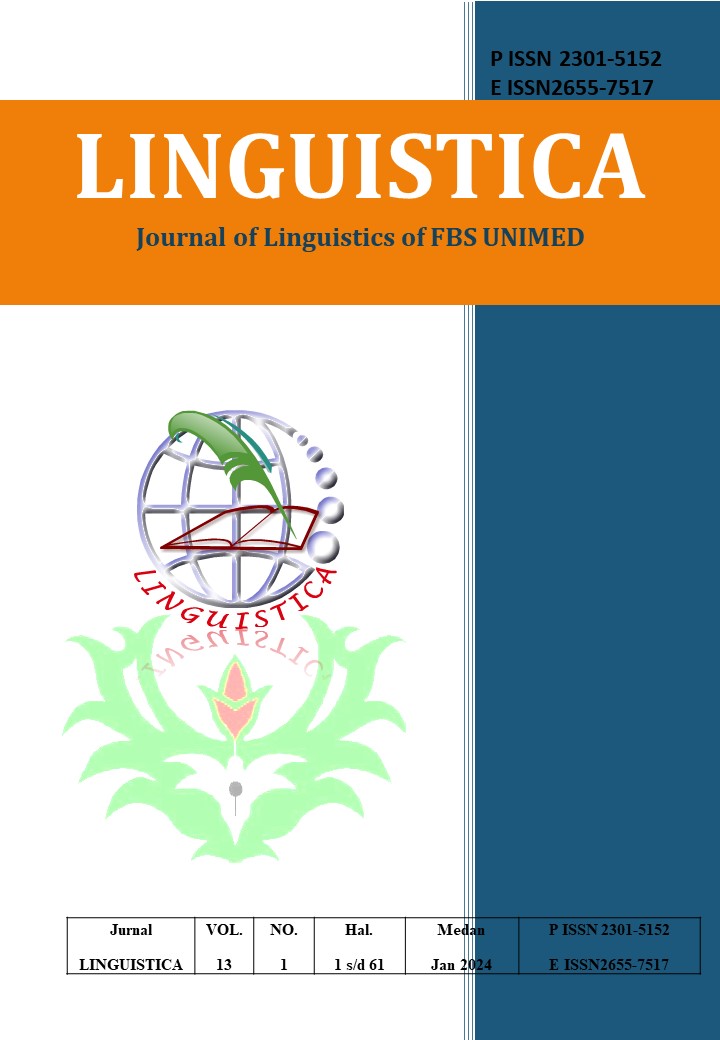A FEMINIST STYLISTICS ANALYSIS IN TAYLOR SWIFT™S SONG œTHE MAN
DOI:
https://doi.org/10.24114/jalu.v13i1.56471Abstract
Feminist stylistic analysis of song lyrics can reveal how gender and power relations are represented in music. This research uses observation methods in collecting data by note-taking techniques. The analysis of transitivity choices using Halliday's systemic functional grammar theory can provide a deeper perspective on the relationship between language structure and meaning in the context of feminist song lyrics. The song aims to talk about a strong feminist message, permeating the narrative of gender inequality in society. The highlight of the song which is also the key reason for the stigma and stereotypes that arise in the society was found through the technique of portraying women's experience and their comparison with men's experiences in the community and because this through the desire to "be a man" the song wants to convey the message of gender equality.Downloads
Published
2024-03-03
Issue
Section
Articles
License
Copyright (c) 2024 AZURA DHARMAYA, SHANAZ MUTIA, RAHMADSYAH RANGKUTI

This work is licensed under a Creative Commons Attribution-ShareAlike 4.0 International License.
Authors who publish with this journal agree to the following terms:
- Authors retain copyright and grant the journal the right of first publication with the work simultaneously licensed under a Creative Commons Attribution License that allows others to share the work with an acknowledgment of the work's authorship and initial publication in this journal.
- Authors are able to enter into separate, additional contractual arrangements for the non-exclusive distribution of the journal's published version of the work (e.g., post it to an institutional repository or publish it in a book), with an acknowledgment of its initial publication in this journal.
- Authors are permitted and encouraged to post their work online (e.g., in institutional repositories or on their website) prior to and during the submission process, as it can lead to productive exchanges, as well as earlier and greater citation of published work (See The Effect of Open Access).
- This work is licensed under a Creative Commons Attribution-ShareAlike 4.0 International License.

